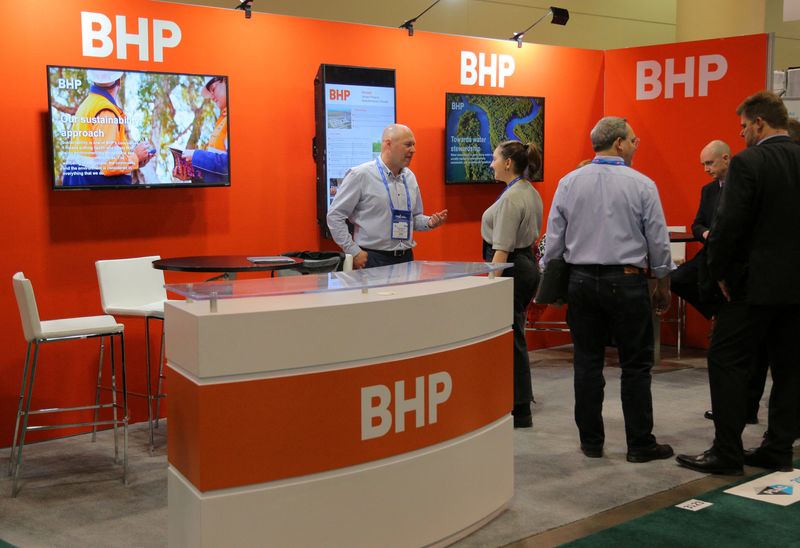(Reuters) -BHP Group posted a 5% rise in second-quarter iron ore production, driven by strong performance at its Jimblebar mine and ramped up production at South Flank, but warned of possible disruptions in Western Australia due to rising COVID-19 cases.
The proposed easing of Western Australia's border restrictions on Feb. 5 may cause some short-term disruption to the operating environment as the pandemic evolves in the state, the company said on Wednesday.
BHP produced the first iron ore in May last year at the $3.6-billion South Flank project in Western Australia, which is expected to eventually churn out 80 million tonnes (Mt) a year.
Iron ore production from the region was 73.9 Mt in the three months ended December, up from 70.4 Mt a year ago, the miner said.
Meanwhile, BHP slashed annual forecast for its metallurgical coal output due to wet weather impact along with the pandemic-related labour constraints. It now expects output of between 38 Mt and 41 Mt for the commodity, down from the 39 Mt and 44 Mt it estimated earlier.
Copper production was trending towards the low end of the annual forecast range of 1,590 kilo tonnes (Kt) to 1,760 Kt, the company said, reflecting lower production guidance for Pampa Norte in Chile.
BHP, the world's largest miner, is investing more in "future-facing commodities" as it divests its petroleum arm to Woodside Petroleum and targets more opportunities in nickel, a key component in the production of electric-vehicle batteries.

Shareholders of the global miner are set to vote on Thursday on whether to unify its structure, bringing its dual-listing in London within a single Australian-listed company.
Rival Rio Tinto (LON:RIO) on Tuesday forecast slightly weaker-than-expected 2022 iron ore shipments, citing tight labour market conditions and production delays from the new greenfield mine at Gudai-Darri project.